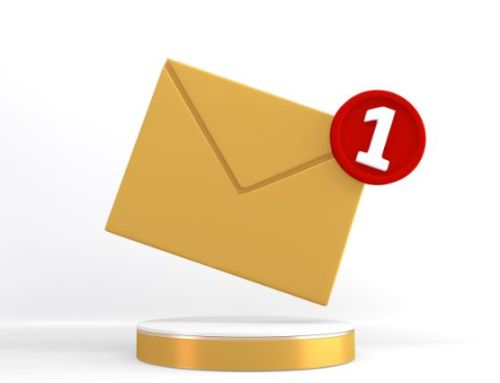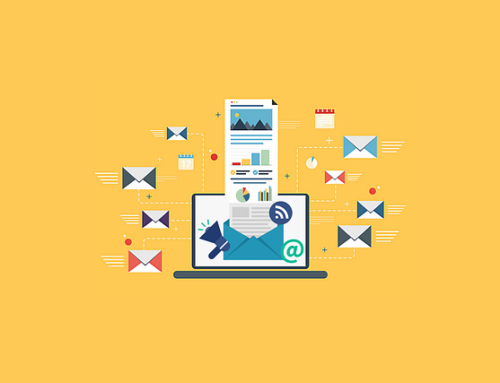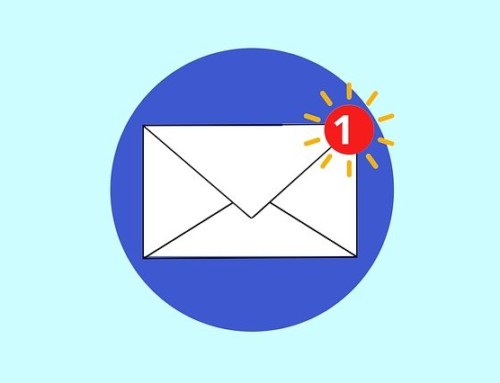Small business marketers know it takes a lot of effort to put together an email marketing campaign. Regardless of what email marketing platform you use, it takes considerable time to create a template, craft compelling content, find the right images, build your email lists, and segment lists to ensure you’re message is targeted for the right group. That’s why it’s so frustrating when you follow all the right steps and still have a high bounce rate. Learn how to address a high bounce rate in your email marketing efforts to ensure your message is getting to its intended audience for the best impact.
What is a bounce rate?
 Very simply, your bounce rate is the percentage of email addresses that your campaign could not be delivered to. The higher the bounce rate, the fewer people actually received your email message. To dig a bit deeper, it’s important to understand that there are two types of email bounces: a soft bounce and a hard bounce. A soft bounce means that the email address you sent your email to is valid and was delivered to the recipient’s inbox, but it bounced for one of a variety of reasons, including because the mailbox was full, the server was down, or the message was too large for the recipient’s inbox among other possible issues. A hard bounce happens when the email is permanently rejected because the email address is invalid, or the email address doesn’t exist. Both will impact the overall effectiveness of your email marketing, so learn what causes bounces and how to address them.
Very simply, your bounce rate is the percentage of email addresses that your campaign could not be delivered to. The higher the bounce rate, the fewer people actually received your email message. To dig a bit deeper, it’s important to understand that there are two types of email bounces: a soft bounce and a hard bounce. A soft bounce means that the email address you sent your email to is valid and was delivered to the recipient’s inbox, but it bounced for one of a variety of reasons, including because the mailbox was full, the server was down, or the message was too large for the recipient’s inbox among other possible issues. A hard bounce happens when the email is permanently rejected because the email address is invalid, or the email address doesn’t exist. Both will impact the overall effectiveness of your email marketing, so learn what causes bounces and how to address them.
Email platform reporting tools
One of the many reasons small business marketers opt to use an email marketing platform like Constant Contact, Mailchimp, Sendinblue, or numerous others is because of their reporting capabilities. Chances are if you’re merely sending from your inbox, you likely won’t know if an email bounced unless it comes back “undeliverable.” Not knowing why an email bounced will do little to help you rectify the situation, which is why ideally you should use an email marketing platform to provide those kinds of insights. If you’re already using an email marketing platform, the following types of bounces will be identified so that you know how to address them.
Non-existent email address
When an email bounces because of a “non-existent email, that means that the email address isn’t valid; it could have a typo in the address, the person with the address may have left the company or has an incorrect extension such as .net instead of .com. When you get this message, it’s important to review the email addresses in question to see if there are any obvious typos in the email address. If not, try to acquire a different email address for that contact. Regardless, these bad email addresses should be removed promptly to avoid future bounces.
Undeliverable email
 If bounced emails are marked as “undeliverable,” the receiving email server is temporarily unavailable, was overloaded, or couldn’t be found. A server could be under maintenance or is down temporarily, so this may mean waiting to send the email to the address again. Be judicious when resending emails multiple times to an undeliverable email address; if the email address repeatedly bounces on multiple email attempts, it may mean the server is gone for good. Once again, if you’re unable to get an email through after a couple of attempts, it’s best to remove it from your email marketing list.
If bounced emails are marked as “undeliverable,” the receiving email server is temporarily unavailable, was overloaded, or couldn’t be found. A server could be under maintenance or is down temporarily, so this may mean waiting to send the email to the address again. Be judicious when resending emails multiple times to an undeliverable email address; if the email address repeatedly bounces on multiple email attempts, it may mean the server is gone for good. Once again, if you’re unable to get an email through after a couple of attempts, it’s best to remove it from your email marketing list.
Mailbox full
Especially around the holidays, email marketers find themselves with several emails being returned as “mailbox full.” If someone is out of the office for an extended period and doesn’t check emails while they’re out, this often happens. It also happens if someone is using a secondary email address for solicitations only, and rarely checks the inbox. Regardless of the cause, if your contact has so many emails in their inbox that they can’t receive any more, your emails will bounce back until there’s space for them in the recipient’s inbox. To address this, you may want to follow up with the contact by social media, phone, or mail to check whether the address is valid.
Out of office/vacation/autoreply
 Unlike the above-mentioned categories, this type of bounce means your email was successfully delivered to the inbox. However, the email was replied to with an autoresponder and may not get the engagement you’re looking for. It’s not a bad email address but will not be seen immediately by the recipient. If a significant amount of time goes by and you’re still getting an auto-response to additional emails you send, consider removing the contact.
Unlike the above-mentioned categories, this type of bounce means your email was successfully delivered to the inbox. However, the email was replied to with an autoresponder and may not get the engagement you’re looking for. It’s not a bad email address but will not be seen immediately by the recipient. If a significant amount of time goes by and you’re still getting an auto-response to additional emails you send, consider removing the contact.
Blocked email
If the email addresses are placed within the “Blocked” category, the receiving server has blocked the incoming email. While the message is off-putting to marketers, it’s important to understand WHY the email was blocked. In some cases, you can make adjustments and resend, while in other cases, you’re simply out of luck. With government institutions or schools, servers can be stricter when it comes to receiving emails. If you’re “from” and “reply” emails are from a more generic email address such as “info@” or “sales@” it can trigger a block from stricter servers. To resolve this issue, you need to get in touch with the contact and request that their system administrators unblock your email marketing platform’s IP addresses. Contact your email platform’s provider to get that list to share. Mailchimp and Constant Contact both have information on how to do this.
Bounce reason unknown
Bounces that don’t give the server a reason for bouncing are put in this category (labeled slightly different depending on which email marketing platform you use), so it can mean that the email bounced for one of the reasons above or something else. It’s important to take note of these bounces and remove the email address if the bounce continues to occur.
Keeping your list clean for the best email marketing results
 The common misconception is that the more email addresses you have, the better. Actually, the better email addresses you have, the better, meaning when it comes to email marketing lists, quality trumps quantity. Be sure as you’re building your email lists that you’re only adding emails from people wanting to hear from you. Only add email addresses you were provided by the contact; NEVER scrape email addresses and never buy lists. Be sure to do a manual review of email addresses as you add them to make sure there are no obvious typos. Clean out bad email addresses as quickly as possible to ensure you have a good, clean list. The result will be a greatly reduced bounce rate and higher email marketing effectiveness.
The common misconception is that the more email addresses you have, the better. Actually, the better email addresses you have, the better, meaning when it comes to email marketing lists, quality trumps quantity. Be sure as you’re building your email lists that you’re only adding emails from people wanting to hear from you. Only add email addresses you were provided by the contact; NEVER scrape email addresses and never buy lists. Be sure to do a manual review of email addresses as you add them to make sure there are no obvious typos. Clean out bad email addresses as quickly as possible to ensure you have a good, clean list. The result will be a greatly reduced bounce rate and higher email marketing effectiveness.
- Marketing Tactics That Your Small Business Can Do for Free - January 10, 2024
- How to Create Images for Your Small Business Website - December 6, 2023
- How Small Businesses Benefit from Referrals - November 6, 2023





